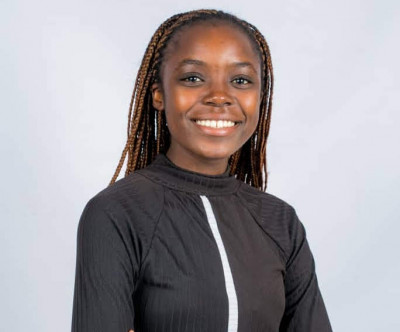One of Britain’s leading auteurs, Peter Greenway, said he has “always been fascinated by maps and cartography. A map tells you where you’ve been, where you are, and where you’re going — in a sense it’s three tenses in one.” This sentiment runs literally and figuratively through the story of Muongeni Tamara Manda.

Born in Shurugwi, Zimbabwe, the 23-year-old is acutely aware of where she comes from and the path ahead of her. The final-year student at Chinhoyi University of Technology in Zimbabwe, with a sort of inherent compulsion, keeps drawing the conversation back to her purpose – she wants to prove to young girls and women in her community that alternative futures are possible, and possible through STEM.
Manda’s story should serve as the exemplar for positive reinforcement producing a desired outcome. Her mother encouraged her to become an engineer, despite her father’s wishes that she follow in his accounting footsteps. But her first love was geography. This was nurtured by her high school geography teacher, who believed that Manda was the key to effecting change. “I want you to follow this path and change Shurugwi one day,” Manda recounts.
Unregulated mining wrought social and ecological ills on the community as Manda laments, “there’s a lot of degradation happening here, a lot of illegal mining activities that are happening. And in geography you are learning about climate change and its effects.”
This is what led Manda down the path of Geoinformatics and Environmental Conservation studies. “I’m learning how to leverage technology to solve these environmental issues. I know how to map the areas that have been degraded, the areas that have been affected. I can tell the planners how many trees are necessary for restoration. I can then go back to the community, raising awareness of the importance of sustainable practices. So it means I’m going to increase climate education [and] space education.”
Manda is most animated when talking about the potential that technology can unlock. “We need ecologists that have a technical background – leveraging technology to conserve the animals, to conserve the safaris and parks. When it comes to safety in the mining industry, now there is the use of drones for safety and inspections rather than going into the field.”
Her examples of what’s possible are not just theoretical and abstract, but practical and applicable to her community. “You can also be a good land planner,” she adds, advising where would be appropriate to construct housing and which wetlands to avoid. Data obtained from mapping is used to ensure adequate provision of electricity and where to drill boreholes in areas prone to drought – all projects Manda has undertaken during her studies. “Where areas are prone to floods and cyclones [we are able to map this] and put in place mitigatory measures before these hazards affect” the community.
The youngest of five children, Manda is accustomed to sharing, but says the academic journey has not been without its challenges. “Nothing is actually easy in life, but it needs passion and perseverance. We have limited resources. Out of 400 students, we only have maybe 24 laptops to use at school, and if you are someone who is not passionate you are just going to say, ‘I have failed.’”
The numerous accolades which Manda has amassed at this nascent stage of her career is testament to the way in which she has faced obstacles along the way. Most recently, she was named as one of Geospatial World’s 50 Rising Stars, highlighting “the outstanding accomplishments of individuals under the age of 40, who are proactive and passionate about the value of geospatial technology to the society, environment and the economy.”
As the old African proverb goes, “It takes a village to raise a child,” and if we do it right, one day that child may just change that village.


















